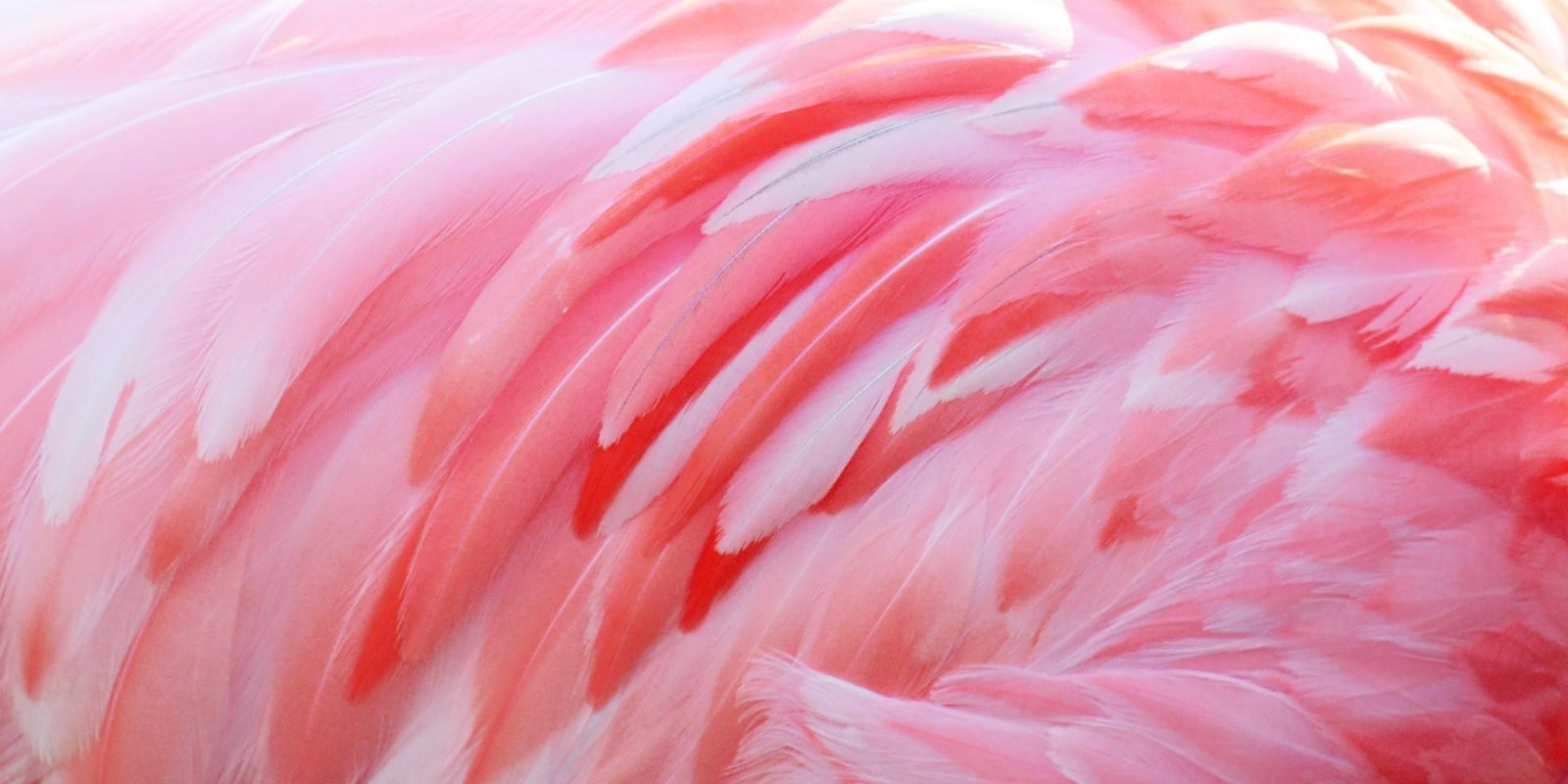The color pink, somewhere between red and white, evokes a multitude of emotions. Soft and calming, yet also playful, cute, cheerful, and sometimes even a little rebellious. It's no wonder pink is so often seen in fashion, interior design, food, and even nature.
Because pink is so much more than just a "girly color," here are 10 surprising facts about pink. Ready for a pink perspective on the world?
1. Not always girly
Today, we think of pink as a color for girls and blue as a color for boys. But for centuries, it was the other way around. In 1918, an English government agency even wrote that pink was the best color for boys, and blue was more suitable for girls. It wasn't until the 1940s that this perception reversed. Fun fact: research shows that both boys and girls actually choose blue as their favorite color most often.
 2. Pink beaches and lakes
2. Pink beaches and lakes
Yes, they really do exist! In the Bahamas, you'll find Harbour Island, famous for its three-kilometer-long beach of bright pink sand. The color is created by tiny shellfish, coral, and minerals mingling with the white sand – a fairytale-like sight. Imagine: walking along the surf, feet in soft pink sand, and the ocean glistening turquoise beside you… as if you've stepped into a dream.
And then there's Lake Hillier in Australia: a lake that's bright pink year-round. Even if you bottle the water, the color remains. Scientists think it's due to special algae and bacteria, but it actually feels a bit magical.
There are even more pink water wonders around the world, such as Lake Las Coloradas in Mexico and Dusty Rose Lake in Canada. Each is a top spot on many travelers' bucket lists.
 3. Pink bananas exist
3. Pink bananas exist
Yes, really, they're rare, but they are real: pink bananas. This tropical fruit grows primarily in Asia and East Africa and has a soft pink skin. Inside, the flesh is sweet and creamy, with a hint of raspberry flavor. They're not often exported, so the chances of finding them in the supermarket are slim. But if you ever happen to come across one while traveling, give them a try! Because how often do you eat a pink banana?
4. Pink makes you have a sweet tooth
Pink has a direct link to our taste perception: it makes us crave sweets more. That's why we often see cake boxes, candy wrappers, and milkshakes in shades of pink. Clever marketing trick!
 5. From food coloring to pink cake
5. From food coloring to pink cake
Many pink foods, such as pink cakes and certain soft drinks, owe their color to E120. This pigment is made from crushed scale insects. Fortunately, there are now also more and more natural, vegan food colorings available.
 6. Pink strength training
6. Pink strength training
Did you know that color influences athletic performance? Male weightlifters are said to be less strong in a pink room, while women actually lift better. Maybe give it a try at your home gym?
7. On a pink cloud
Pink raises your heart rate and blood pressure, just like the feeling of being in love. So it's literally a color that can put you in a romantic mood. It's no wonder that brands in the love world (think Valentine's Day, perfumes, and chocolate) often use pink in their campaigns.
In psychology, pink is also often linked to loving emotions and security. So whether you're dancing in a pink dress, lighting a pink candle, or simply daydreaming in a pink interior: it often feels just a little softer and lighter.

8. Flamingo Foodie
Flamingos are perhaps the most famous pink animals in the world. Their color doesn't come naturally: it's thanks to their diet of shrimp, algae, and plankton. Without that food, they would be a drab gray. And it's not just their feathers; even their egg yolks can have a subtle pink tinge.
Fun fact: Flamingos are often used as symbols of celebration, freedom, and a touch of kitsch. That's why you see them in garden decorations, on flip-flops, and in tropical cocktails. The ultimate feel-good icon, right?

9. Pink calms aggression
In some prisons, walls are painted pink, or prisoners wear pink uniforms. The idea behind this dates back to the 1970s, when psychologists discovered that "Baker-Miller Pink" (a specific shade of pink) can reduce aggression and tension.
The effect is so strong that this pink is also called "drunk tank pink," because it was even used in police cells to calm restless detainees. Pink as a therapeutic color—who would have thought?
10. Even for the color blind
Pink has something special: even people with color blindness experience more peace and relaxation in a pink room. This is because the color not only has a visual effect but also a psychological and physical impact.
That's why you're seeing pink more and more often in wellness centers, yoga studios, and bedrooms. Because let's be honest: a soft pink duvet or wall covering instantly gives you that feeling of security – as if you're literally stepping into a warm embrace.
Pink: more versatile than you think
Whether you're thinking of sweet treats, flamingos, or a bold statement in your outfit, pink is a color with a thousand faces. It's soft yet rebellious, sweet yet bold.
Curious about other colors? Discover our in-depth blog posts about the fascinating world of red. , green , blue and yellow . Every color has its own secrets to reveal!
Did you know that this color psychology is also applied in marketing, architecture, and even therapy? The power of color extends far beyond what we could ever imagine.












Interesting? Share with someone:
Create instant coziness in your home with the right coffee table
An original maternity gift: surprise the new parents with something special